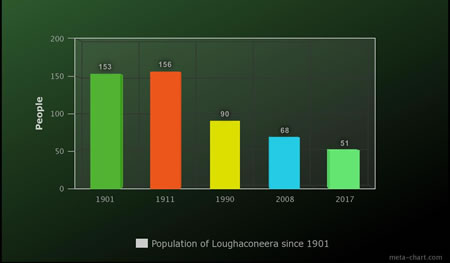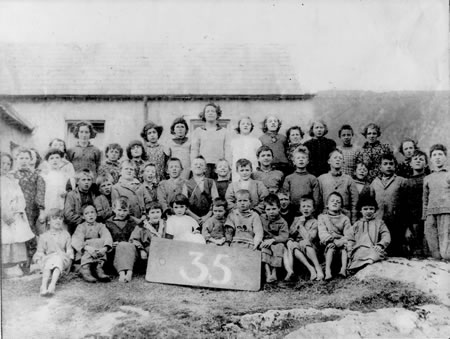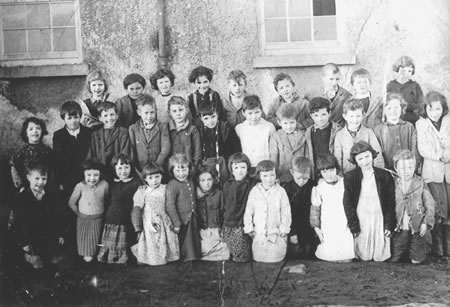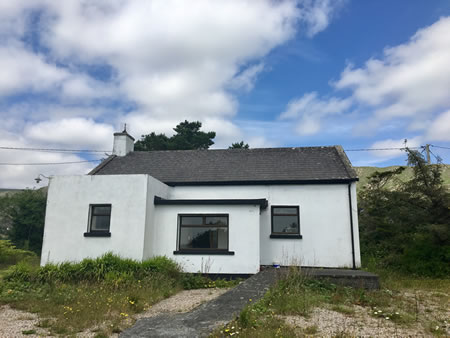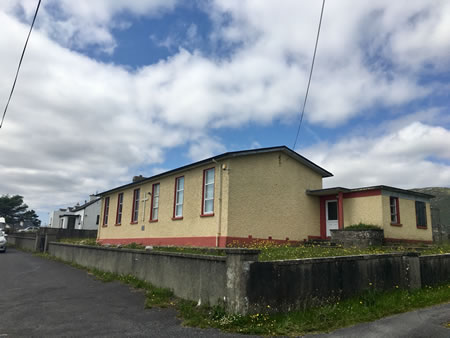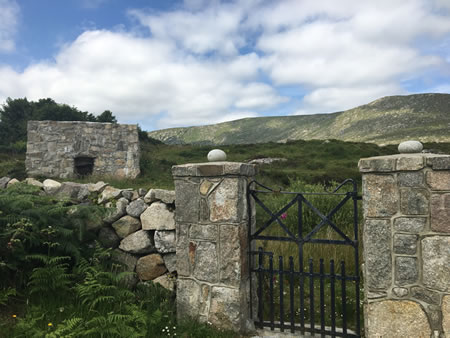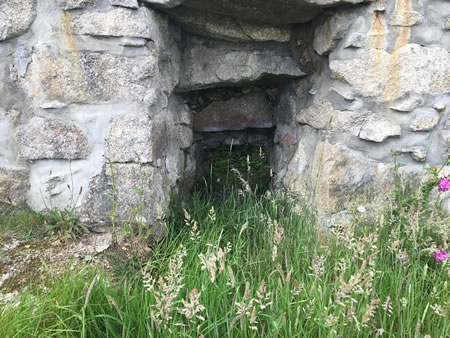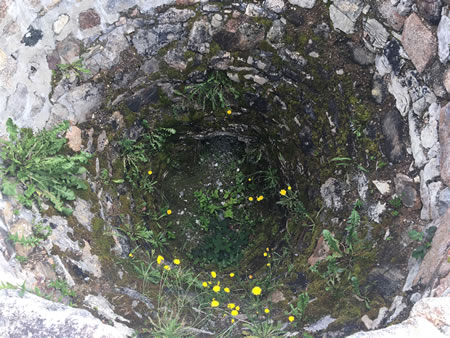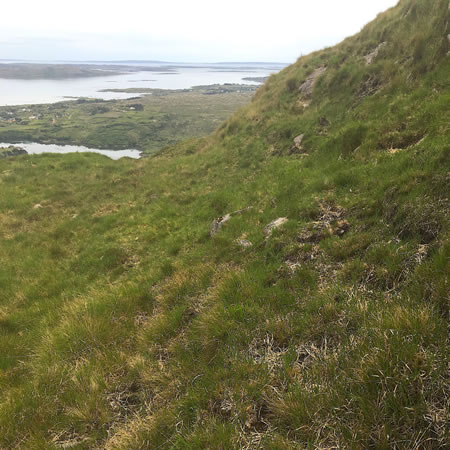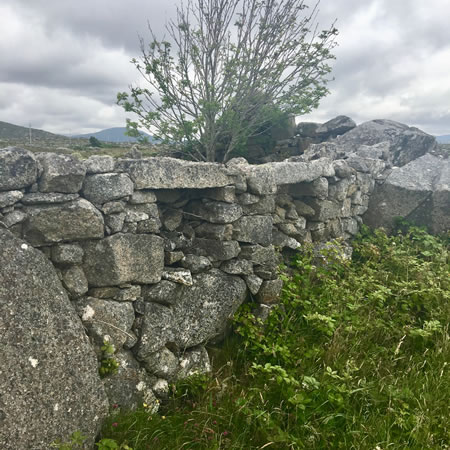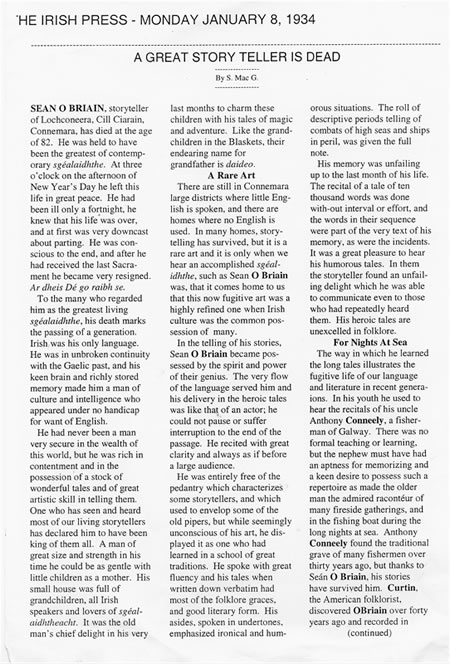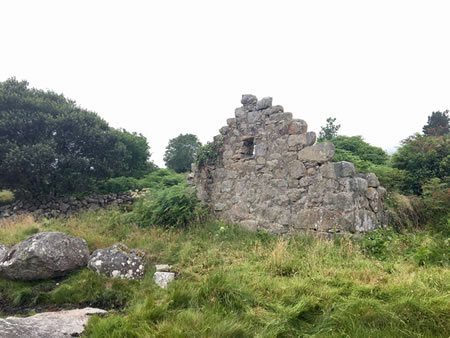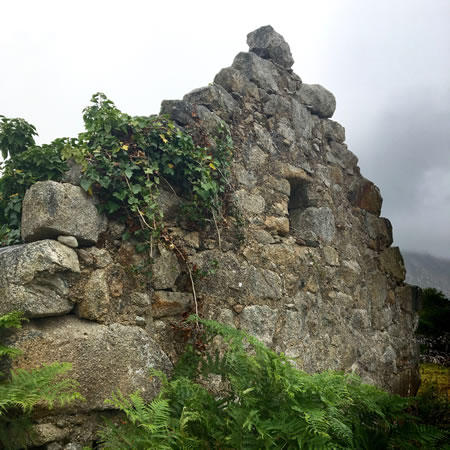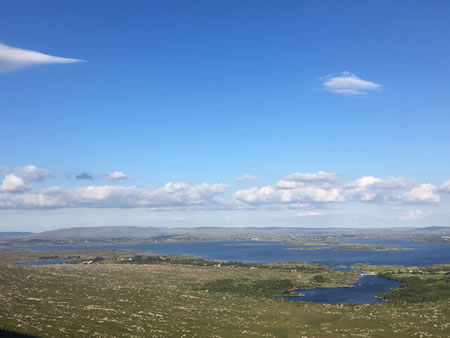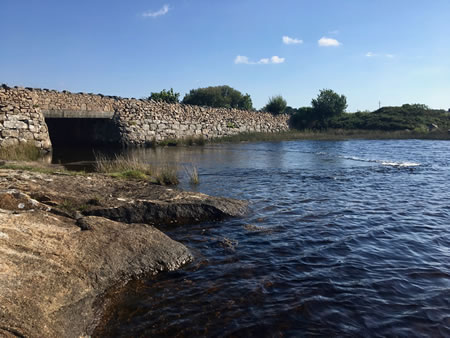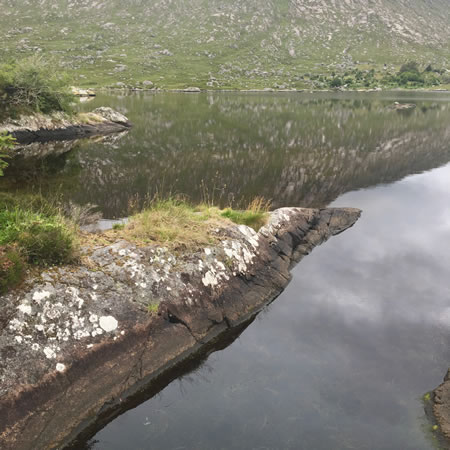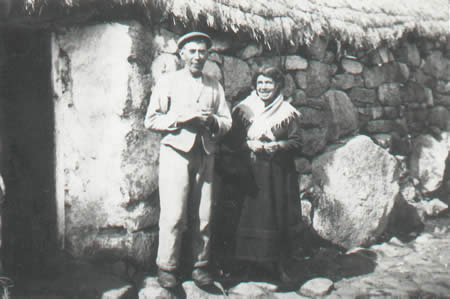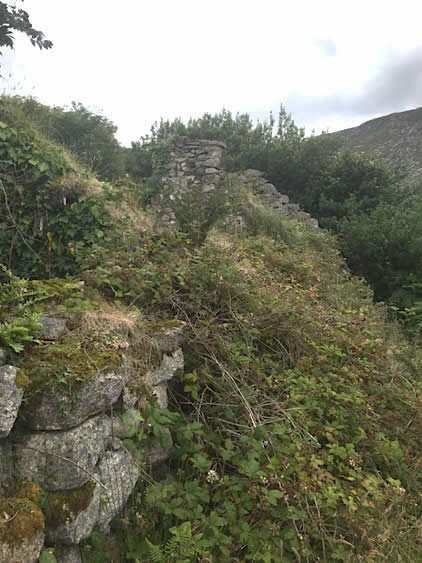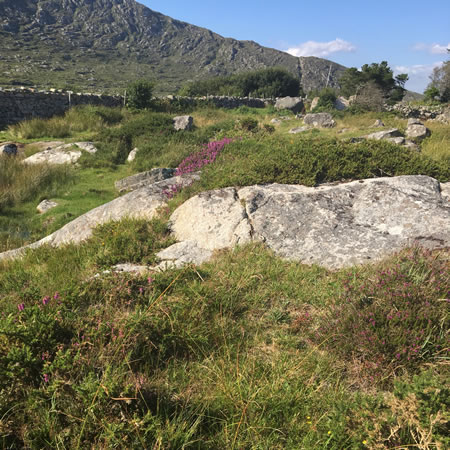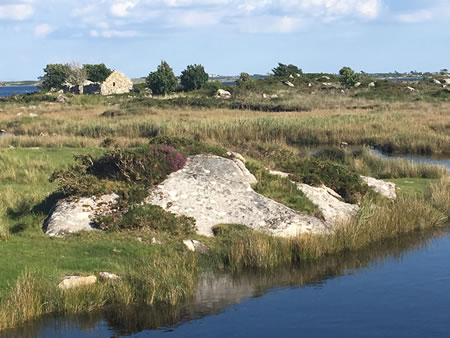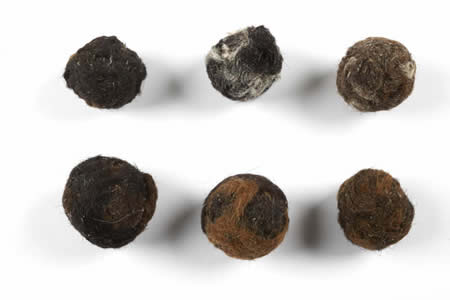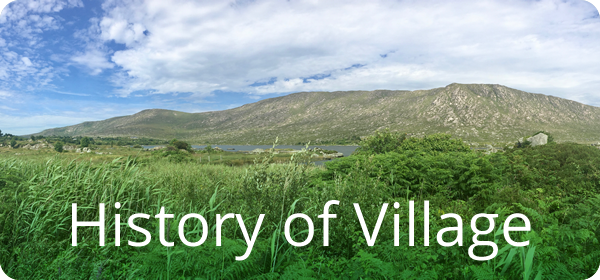20th Century
The census for 1901 shows that the population of the village had continued to increase, and it gives more information about the people and their dwellings.
- 1901….153 Persons
- 1911….156 Persons
The census for 1901 and 1911 are available on the links below.
http://www.census.nationalarchives.ie/
http://www.census.nationalarchives.ie/
The School
The first official national school in the village was built in the late 19th century. The catchment area included Derryrush, Loughaconeera and part of Kysalia. The school and pupils were associated with ‘Bailiúchán na Scol’, which was a part of the states national plan for school children to collect stories and folklore from their parents, grandparents and neighbours during the 1930s. The collection is available on the website below.
http://www.duchas.ie/ga/cbes/46026a96
New School
A new school was built in 1955, close to the original one. It is a three roomed school and had three teachers up until the 1960s. It closed in 1970, and the pupils attended Cill Chiaráin school after the closure.
There was an Irish collage in the school from the 1960s to the 1980s. Teenagers from around the country would attend these summer courses to improve their Irish (Gaelic) that was, and still is, our first language. The students would board in local houses and get firsthand experience of life in the countryside and it also provided a valuable source of income for the local households.
The schoolhouse was also used for Mass between the 1970s – May 2004.
Means of Income
Lime Kiln
This lime kiln was constructed in the very early 1930s by Patrick Sullivan (John) with the help of Colman Dundas (Annaí) from Kysalia, who was a stonemason. It is the only intact kiln we know of in the area. It is the most common type of kiln built entirely from local stone, with a circular, egg shaped burning chamber on the inside and square construction on the outside. On the front elevation, it has an air inlet at the bottom, which was also used to clean out the kiln when the process of lime burning was complete.
To prepare the limestone for burning, a grill was placed in the chamber above the inlet opening and then alternative layers of turf and limestone were placed to the top. The turf at the bottom would be lit first and then with time the fire would extend to the other layers of turf through the limestone. The burning and cooling process would take 3 or 4 days. After cooling, the burnt limestone was separated from the turf ash and was mostly used on the land locally and as mortar on houses.
The limestone was sourced from the Aran Islands and was transported by boat to the nearest pier at Flannery Bridge. It was then taken by horse and cart to the lime kiln.
Cosán an Railway
This is the pathway the men and boys of the area would use to walk to work the construction of the new railway line between Galway and Clifden. Construction of the railway commenced in 1891 and employed up to 1,500 people. Work was available to anyone who wanted it, but initially the conditions were not very good and this led to 100 men going on strike in an attempt to secure better working conditions. They demanded an extra 6 pennies per day and a shorter working day, reducing their working hours from 6:00am – 6:00pm to 7:00am – 5:00pm. Their demands were fully met and this raised their pay to 12 shillings per week.
It was a long arduous day for the workers from the village. They would walk up to 20 miles across mountain and bog before doing a full day’s work and then walking home again, at which point they would then have to attend to hay, turf, potatoes etc.
The railway line opened in 1895 and the first passenger train left Galway on the 1st. July for Clifden. There were a number of smaller stations on the route and the train journey took two hours. The railway line was operational for 40 years and made Connemara, and particularly the fishing and hunting in the area, much more accessible for tourists. The line was closed In April 1935 due to the high cost of repair and maintenance work.
Emigration was one of the main reasons Connemara people made use of the train service. They would walk from this area with family and friends to Maam Cross and take the train to Galway and then on to their destination. It was a long sorrowful walk with some of them never returning to their native soil.
Other Stories
Dudley Grealish (Darach Phatchach)
This factual story was recounted by Eddie Bheairtle Ó Conghaile from Ard.
Like his father before him, Dudley was a boats man as were his brothers. They traded with their boat, mostly turf to the Aran Islands, Galway and Co. Clare, as well as fishing when the turf season finished. Like every man who had a boat in the village, there was no shortage of work. There was a lot of turf being cut at the time, and the boats were needed to transport the turf to the above mentioned places.
One day they were in Galway with a load of turf, and Dudley’s brother, Thomas, was in the boat. Thomas was not in the best of health this particular day, and the crew was worried about him. They left Galway for home, and on the journey Thomas died on the boat. The crew was worried that the plague was the cause of death, and more importantly, where would they bury him. At that time, anyone who died of the plague was not allowed to be buried in the common graveyard, because of the implications it would have when burying someone else close to the grave at a later stage. The plague was very contagious, even years after the body being buried. On the eastern side of Carraige Meacan they met Tomás Mac An Ríogh (Tomás Shéain Shiobháine) in his púcán, and they told him the story of Thomas dying. After discussing it, their minds were made up, so they decided to change course and they headed for Mac Dara’s Island and after a few prayers they buried him there.
It is believed that he was the last person to be buried on the island.
Seán Ó Briain, Storyteller
1852 – 1934 (Seán Éadúirt)
His father's people came from Kilbride in County Mayo. His mother was Connolly. Seán was a farmer and fisherman, and he had his own boat. He heard the stories from his uncle Antoine Mac Conaola, while out fishing on the sea. Seán was married to Nainín Reilly, and they had ten children. Seán had over 50 long stories/folktales.
The American folklore collector, Jermiah Curtin, on his second visit to Ireland, spent four months in this area in 1892/93. He heard about Seán, and collected stories from him. Sean had no English, so the church clerk in Kilkieran translated the stories for Curtin. Seán's stories were published by Jermiah Curtin in his book "Irish Myths and Legends," and also in "The New York Sun”
It would be 40 years before the collector Seán Mac Giollarnath came to Seán Ó Briain. He published three of Seán's stories in the book "Loinnir Mac Leabhar." (1936)
Mac Giollarnath introduced Seán to Professor Seamus Ó Duilearga, one of the founders of The Irish Folklore Society. The professor spent some weeks with Seán. Though he was 80 years of age at this time, Seán's mind was as clear as ever. Professor O Duilearga said of Seán: "He was the greatest storyteller I have ever known.”
Seán Ó Briain is buried in Kilkieran cemetery.
When Seán Ó Briain passed away on January 1st 1934, Seán Mac Giollarnáth wrote a page long obituary in the national newspaper 'The Irish Press.’
The Ábhach.
A tragedy happened here in the late 19th century.
A Cobbler was travelling on foot across the mountain from Gowla, in the Cashel area to Kysalia to seek any repair work he might find in the village and surrounding villages. It was the norm at that time for tradesmen to travel from village to village to seek such work. Shortly after heading off in the late evening, a very dense fog descended on the mountain and with the low visibility and no form of light the Cobbler strayed off the usual path and reached the top of the mountain directly above the near-vertical mass of rock we call The Abhach. Not knowing where he was, he took a step too far and went tumbling down the rock face and landed on a ledge half way down, with many broken bones. He started shouting and calling for help. The people from Kysalia and Rusheen heard the cries for help and headed up to investigate. When they came to the bottom of The Abhach, they could hear him but could not see him, and they became afraid. At that time the people had great fear of ghosts and the ‘unknown’, so they advised him to stay on the ledge and that they would return at daybreak to help him. When they returned the following morning they found the cobbler dead at the bottom of the Abhach. He was buried where they found him.
Mooring place for Padraic Connolly’s (Máirtín Anna) Boat.
Padraic, along with his son Patsy, did a lot of work with his boat as did everyone else who had one. They used to cut their turf on the opposite side of the lake and when dry they would transport the turf home by boat.
They would also cut a lot of seaweed in springtime to be used as fertilizer on the land and to do that they would have needed to bring the boat off the lake down to the sea. There is a small river running from the lake into the sea and on the spring tide the sea runs into the lake. That would be their chance to take the boat down and even on high tide it could barely float down. Every boatload of seaweed they would cut would need to be off-loaded at the mouth of the river and when enough seaweed was cut, the empty boat would be moved up onto the lake, again on the spring tide.
The hardest work had yet to be done, moving the seaweed on their backs by basket up to the lake where the boat was waiting. The boat would be rowed, when full, up the lake and the seaweed spread on the land at their house.
Suíochán an Phiarsaigh. (Pearse’s Seat)
Patrick Pearse would sit on this rock and write some of his stories. Eddie Bheartla Ó Conghaile remembers his mother Annaí telling him that Pearse would walk, pen and paper in hand, from his house in Rosmuc to this peaceful and tranquil place to write. He would sit facing the lake and mountain, with the river to his left and the sea behind him, and no writer would need better inspiration. He would stop into Eamonn Tom O’Malley in Derryrush for a visit and would sometimes meet Paraic Ó Conaire there and would chat and argue for a few hours.
Cow Hair Balls
These cow hair balls were collected by the folklore collector James Delargy in the early 1930s. They were made by schoolchildren from Loughaconeera and were presented to him on one of his visits to the village by the then teacher of the school, Miss. Keys. James Delargey gave the six balls to the Irish Folklore Collection of the National Museum of Ireland and they have been on exhibit in Turlough Park, Castlebar, Co Mayo. We are thankful to the National Museum for perrmssion to use this photograph.
The boys of the village were making these cow hair balls up to the 1960s. They would make two types of balls, hard and soft balls. They would make them in summer while their parents were milking the cows, and while the cows were shedding their hair.
To make the hard ball, they would draw the tips of their fingers down the side of the cow, and some hair would become loose and attach to the fingers. They would then get a small stone, about the size of a marble, and place the cow hair on top of it in the palm of their hand, and then apply saliva to it. They would then place their other hand over the hair and stone and roll it between their two palms. The hair would become attached to itself and to the stone. They would follow the same procedure of scraping more hair and attaching it to the ball with saliva to enlarge its size. It was a very slow process, but eventually they would end up with a cow hair ball that was very hard.
To make a soft cow hair ball, they would scrape some hair off the cow with their fingers and roll it between their palms without any stone to form the foundation of the ball. They would then roll this small ball with the palm of their hand on the cow’s hide. The loose hair on the cow would attach itself to the ball and before long they would have made a nice sized ball. The children would play their own different games with the hard and soft balls.

